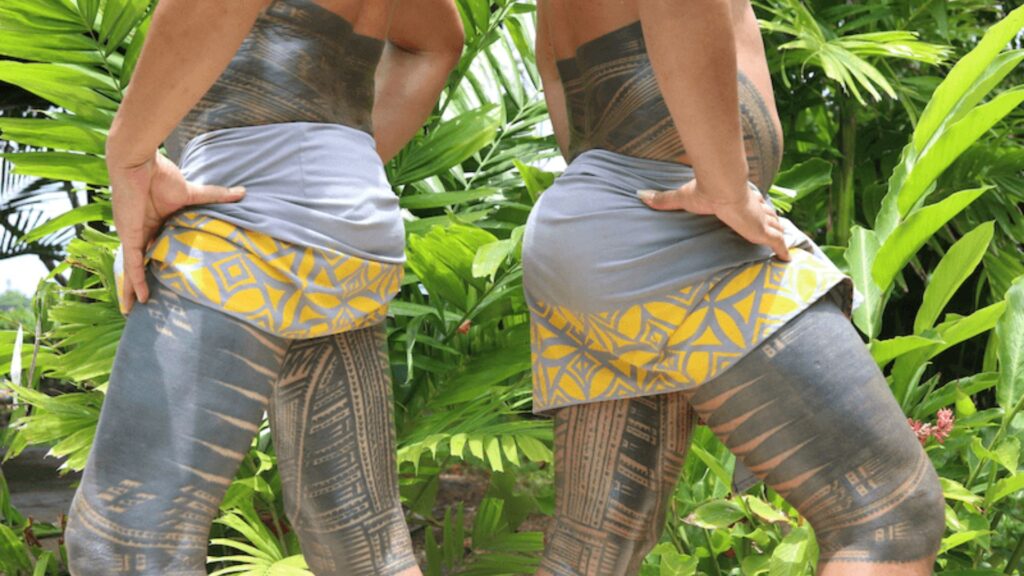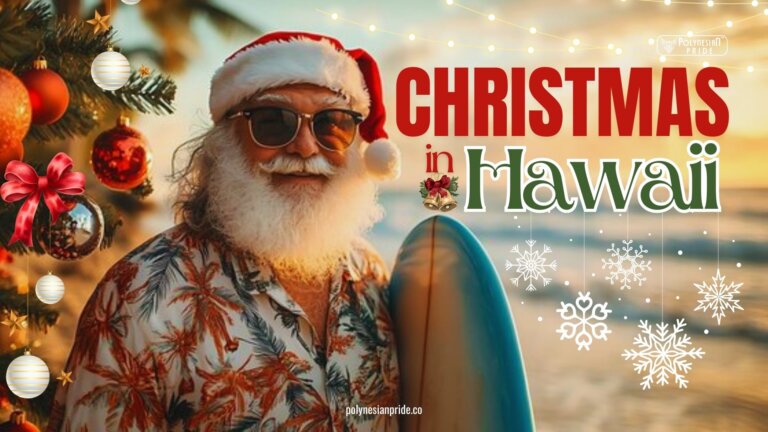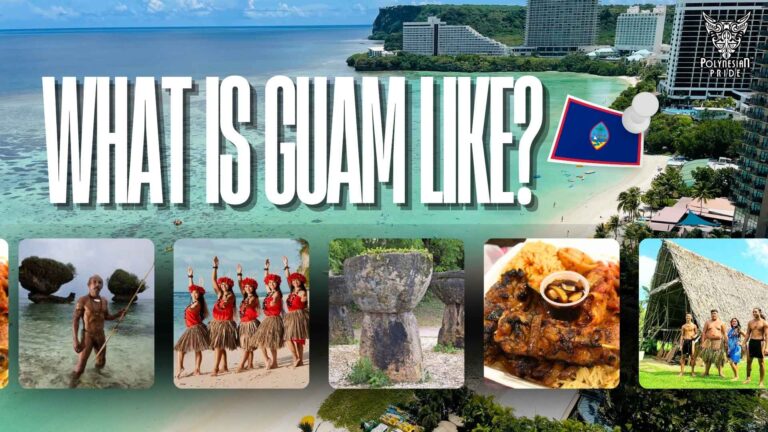Samoan Traditional Tattoo: Beauty Timeless Cultural Heritage

INTRODUCTION
Samoan traditional tattoos, known as “tatau”, are not just body art – they are a unique and profound expression of cultural identity and heritage. With a rich history and deep symbolism, ‘tatau’ is a rite of passage and a badge of honor in Samoan society. Let’s delve into the unique world of Samoan traditional tattoos, exploring their origins, significance, and the meticulous process involved in creating these one-of-a-kind pieces of art.
I. History of Samoan Traditional Tattoos
A. Origins and Evolution
The origin of the Samoa traditional tattoo began when Europeans first arrived in Samoa in 1787 as part of a French expedition. They observed the native sand and said “that the men’s thighs were so intricately tattooed that they appeared clothed, even though they were almost naked”.
The Samoan traditional tattoo was introduced to the Samoan Islands by two women from Fiji, who brought with them the tools and knowledge of tattooing. Legend has it that the sisters initially sang a song declaring that only women should be tattooed.
Still, as they approached the shore, the song mistakenly changed to indicate that only men should receive tattoos. Despite initial disinterest, a Samoan chief volunteered to undergo the tatau process, sparking a tradition that soon became widespread throughout Samoan culture.
B. Role Of the Samoa Traditional Tattoo
In Samoa, the traditional tattoo process holds a significant place in the social hierarchy, particularly among chiefs and their assistants who come from notable families and are in the proper birth order.
Tattooing ceremonies for young chiefs, usually held at the onset of puberty, are elaborate events marking their rise to leadership. The permanent marks left by the tattoo artists symbolize their endurance and commitment to cultural traditions, making the tattooing process a crucial part of their identity and social status.

II. Tattoo Artists (Tufuga)
The traditional Samoan tattoo artist, known as the Tufuga, plays a crucial role in creating and executing tattoo designs. This role is not just a profession, but a responsibility passed down through generations. Only the descendants of a Tufuga can continue the practice of tattooing, ensuring the continuation of the tatau ritual and the preservation of Samoan cultural heritage.
The role of the tufuga is highly revered in Samoan culture. Becoming a tufuga requires years of apprenticeship under a master, learning the traditional methods and the cultural significance of each design. Tufuga are not just artists but custodians of Samoan heritage.
III. Techniques and Tools
A. Samoa Traditional Tattoo Tools
Samoan traditional tattoo is a highly skilled and intricate process that relies on specialized tools and techniques. The primary tools used in this practice are:
- Autonga: A set of finely carved bone or tusk tools used to tap the ink into the skin.
- ‘Au’aunanga: A mallet made from wood or bone, used to strike the autonga and drive the ink into the skin.
- Amu: A pigment was made by smoking nuts on the fire with a coconut shell above to collect the soot. The soot was mixed with sugar water to create a paste and then sealed and cured for at least a year.
B. Techniques and Process
The Samoan traditional tattoo process begins with the tufuga carefully mapping out the desired design on the recipient’s skin using a special mallet and ink. Once the design is outlined, the tufuga uses the autonga and ‘au’aunanga to tap the ink into the skin, creating a lasting and permanent tattoo.
This traditional method is a labor-intensive and time-consuming process, often taking several weeks or months to complete. The tufuga must possess exceptional skill, patience, and attention to detail to ensure the intricate designs are executed with precision and accuracy.

IV. Designs and Patterns
A. Common Motifs and Patterns
Samoan traditional tattoos are known for their intricate and visually stunning designs, which often feature a combination of geometric patterns, nature-inspired motifs, and conventional Samoan symbols. Some of the most common motifs and patterns found in these tattoos include:
- Entwined patterns: Representing the interconnectedness of life and the importance of family and community.
- Waves and ocean elements: Symbolizing the strong connection between Samoans and the ocean, a vital part of their culture and way of life.
- Turtles and fish: Representing fertility, longevity, and the importance of respecting nature.
- Geometric shapes: Incorporating triangles, circles, and other geometric forms, often representing specific cultural values or concepts.
B. Influence of Nature and Mythology
Samoan traditional tattoos are deeply rooted in the natural world and the rich mythology of Polynesian culture. Many of the designs and motifs are inspired by elements of nature, such as plants, animals, and celestial bodies, each carrying its symbolic meaning.
For example, the use of turtle motifs is believed to represent longevity and fertility. At the same time, the incorporation of waves and ocean elements reflects the strong connection between Samoans and the sea.
Additionally, mythological creatures and legends often find their way into tattoo designs, serving as reminders of the cultural narratives and beliefs that have shaped Samoan society.

V. Gender-Specific In Samoan Traditional Tattoo
Samoan males with a pe’a tattoo design are called soga’imiti and are respected for their bravery. Untattooed Samoan males are colloquially referred to as telefua or telenoa, meaning “naked”.
Individuals who begin the tattooing process but do not complete it, often due to pain or occasionally because they are unable to pay the tattoo artist, are referred to as pe’a mutu – a mark of shame.
The Samoan traditional tattoo for females is the malu. In Samoan society, both the pe’a and the malu are seen with cultural pride and identity, symbolizing the hallmark of manhood and womanhood.

A. The Pe’a: Male
Pe’a is the traditional tattoo design for men that spans from the waist to the knee. The design is very intricate, with a series of lines, curves, geometric shapes, and patterns. Each section denotes a special meaning to the person’s character, family, and culture.
Getting a pe’a is an intense and painful experience compared to tattoos made by modern tools – the tattoo machine. Not only are these tattoos very large, but they can extend to very sensitive parts of the body. The men in the Samoa islands got their first tattoo at the beginning of puberty. It takes weeks or even months to complete a pe’a tattoo because there are many stages of tattooing.
Only a section at a time is tattooed during these sessions. Tattoo apprentices and helpers assist the Tafuga by stretching and wiping away the blood. The Samoan women sit and sing songs to occupy and deter the pain of the person being tattooed.
B. The Malu: Female
In contrast to the Pe’a, the Malu is a traditional tattoo specifically designed for women in Samoan culture. This tattoo covers the legs from the knees to the upper thighs and is characterized by more delicate and intricate designs compared to the bold patterns of the Pe’a. The Malu symbolizes femininity, fertility, and the important role of women in Samoan society.
The designs and motifs found in a Malu often draw inspiration from nature and mythology, incorporating symbols of fertility, protection, and feminine strength. The intricate patterns reflect the interconnectedness of life and the importance of community and family in Samoan culture.

VI. Cultural Significance Of Samoan Traditional Tattoo
A. Symbol of Identity
Tatau is a powerful expression of personal and cultural identity. For Samoans, receiving a traditional tattoo is a way of honoring their heritage and demonstrating their commitment to their cultural roots. The designs are unique and carry specific meanings that reflect the individual’s lineage, achievements, and social status.
B. Rite of Passage
Getting a ‘tatau’ is often considered a rite of passage, marking significant transitions in a person’s life. For young men, the pe’a – a large tattoo covering the body from waist to knees – signals their readiness to take on adult responsibilities and leadership roles. Similarly, the ‘malu’, a more delicate tattoo for women, symbolizes maturity and social standing.
C. Spiritual and Ancestral Connection
Tatau is also a way to connect with the spiritual world and honor one’s ancestors. The designs often include motifs and symbols that represent protection, guidance, and blessings from the spirits. This spiritual aspect reinforces the individual’s bond with their lineage and the larger community.
D. Cultural Pride
Wearing a traditional tattoo is a source of immense pride for Samoans. It serves as a constant reminder of their cultural heritage and the values that define their community. By displaying their ‘tatau’, individuals celebrate their identity and contribute to the preservation of their cultural traditions.
E. Community and Unity
The process of receiving a ‘tatau’ is often a communal event involving family, friends, and community members. It fosters a sense of unity and collective identity, as the individual undergoing the tattooing is supported and celebrated by their loved ones. This communal aspect strengthens social bonds and reinforces the importance of community in Samoan culture.

VII.L Preservation Of Samoan Traditional Tattoo
A. Cultural Education and Awareness
One of the primary methods of preserving Samoan traditional tattoos is through cultural education and awareness. Efforts are made to educate both Samoans and non-Samoans about the deep cultural significance of ‘tatau’. Schools, cultural centers, and community workshops often include lessons on the history and meanings of traditional Samoan tattoos.
B. Integration of Modern Safety Practices
While preserving the traditional methods of tattooing is important, integrating modern safety practices is equally vital. By adopting sterilization techniques and ensuring hygienic conditions, the risks associated with conventional tattooing can be minimized. This blend of tradition and modernity helps maintain the practice’s relevance in today’s world.
C. Modern-Day Tatau Ceremonies
When evangelists converted villages in the Samoan islands, they initially tried banning tattooing. They saw it as “degrading the skin” and believed the tattoos had religious meanings they didn’t support.
While the ban worked in some villages, young Samoans who still wanted their ‘tatau’ would travel to other villages in the islands to receive them. However, they wouldn’t be allowed to return.
Decades later, tattooing was re-allowed, and since then, it has fully re-emerged as an important part of Samoan culture. Now, it is common for pastors or preachers to sanctify the location of the tattoo session.

CONCLUSION
Samoan traditional tattoos are a beautiful and meaningful tradition that embodies the rich cultural heritage of Samoa. They are more than just body art—they are a testament to one’s identity, lineage, and place within the community. By preserving and respecting these traditions, we honor the profound legacy of ‘tatau’.
FAQs
What does the process of getting a ‘tatau’ involve?
The process involves:
– Preparation rituals.
– The actual tattooing by a skilled ‘tufuga’ using traditional tools.
– A strict aftercare regimen to ensure proper healing.
Are there specific meanings behind different ‘tatau’ designs?
Yes, each design element in a ‘tatau’ carries specific meanings related to familial ties, social status, protection, power, and personal achievements.
How are traditional Samoan tattoos different from modern tattoos?
Traditional Samoan tattoos use natural tools and methods, involve cultural rituals, and carry deep symbolic meanings. In contrast, modern tattoos often use electric machines and can vary widely in style and significance.
Can non-Samoans get a traditional Samoan tattoo?
While it is possible, it is essential to approach this with respect and understanding of the cultural significance. It is recommended that you seek the guidance of a knowledgeable ‘tufuga’ and gain approval from the community.

As an arts and traditional crafts specialist rooted in pe‘a (Samoan tatau), kapa making, and ceremonial carving, I’ve nearly 10 years of experience in fine art and its cultural significance. Experience the beauty of the traditional art of tattooing through my latest publication.
Inspire Your Style
Contact me:
Email: [email protected]
Tel: +685 77 23699






